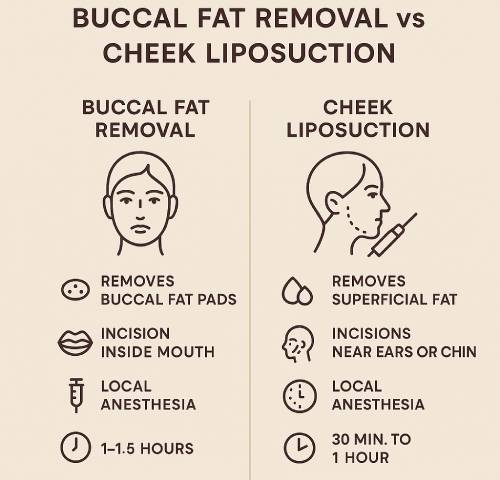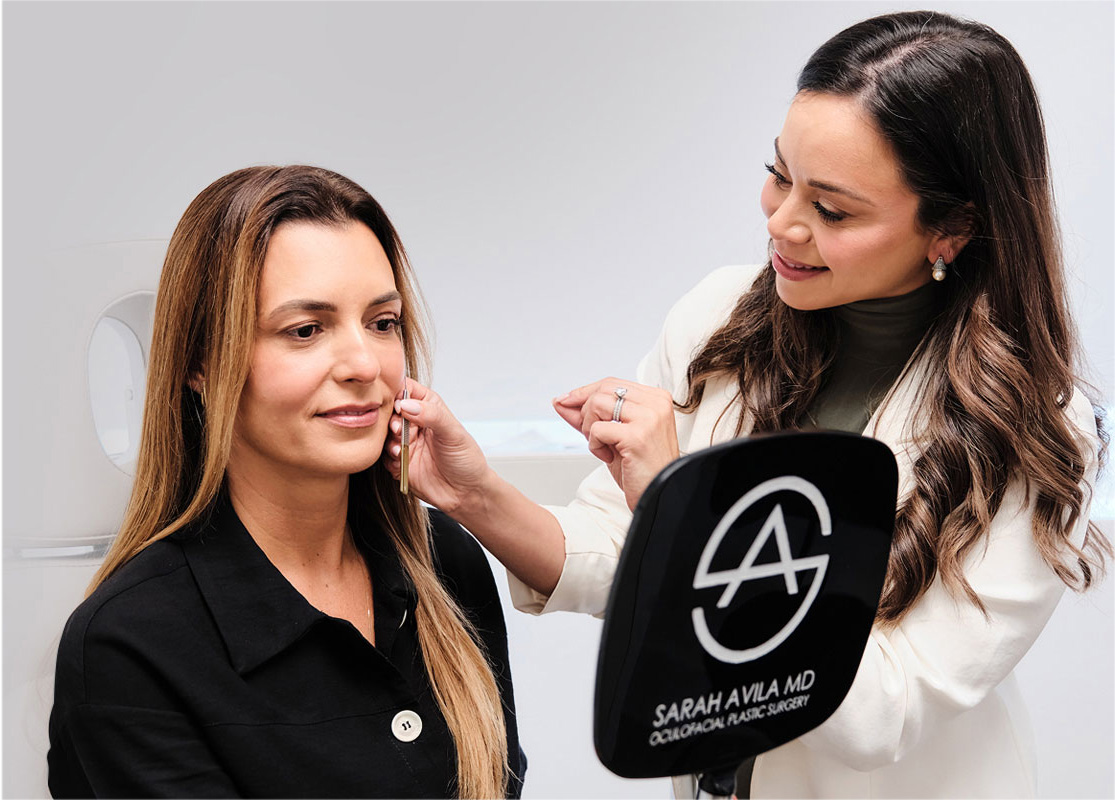Even with a regular diet and exercise, some people have a more naturally round face. This roundness is typically caused by full cheeks, often a result of genetic factors. To address fuller cheeks and achieve a slimmer, more defined facial structure, cosmetic intervention is one of the most effective options. There are two popular cosmetic procedures that create a slimmer face: buccal fat removal and cheek liposuction. Both procedures are designed to reduce fullness; however, they are uniquely different in terms of how they work. To explain these differences, we discuss buccal fat removal versus cheek liposuction so you can determine which procedure will better serve your needs.
Buccal Fat Removal versus Cheek Liposuction
Both buccal fat removal, performed by a buccal fat removal specialist, and cheek liposuction can help slim down the face. However, they are vastly different in terms of technique and targeted areas. If you are wondering which procedure is right for you, consider the following information.
Buccal Fat Removal
Buccal fat removal is a cosmetic procedure that helps to slim and shape the face. It is primarily focused on the buccal fat pads, small pockets of fat located deep within the lower cheeks. Everyone has differently sized buccal fat pads. Larger fat pads give the face a round, soft, and puffy appearance, even in individuals who are not overweight.
The procedure is safe and effective for removing the buccal fat pad from your cheek and slimming one’s facial appearance. The buccal fat pad is removed through a small incision made on the inside of the mouth near the upper back teeth. The fat pad is carefully removed through the incision opening. Then, the incision is closed using special sutures. Because the incision is on the inside of the mouth, there is no outwardly visible scarring.
The procedure takes between thirty minutes and one hour. Procedure times can vary if you are combining buccal fat removal with other procedures. Buccal fat removal can be done with local anesthesia to ensure your comfort throughout the procedure. If you have any concerns, discuss sedation options with your oculofacial surgeon.
Recovering From Buccal Fat Removal
The recovery process from buccal fat removal is generally quick. Most patients are back to their routine within one week. After the procedure, you may experience some swelling and bruising, but this is completely normal and should subside within a few days. Regularly applying a cold compress helps reduce swelling after the procedure. You may also experience mild discomfort, but you should be able to manage this with over-the-counter medication.
Your oculofacial surgeon will provide you with instructions on how to heal safely and effectively. In addition to taking your pain medication as prescribed and using a cold compress, it is necessary to keep your incision clean. Modify your diet for a short period after surgery to minimize the impact on your incision. Opt for soft foods that are mild for the best results. You may also need to use a special mouthwash to clean the incision site. Attend all of your follow-up appointments to ensure proper healing and recovery. You can expect to see your results within a few weeks. However, your final results can take a few months to appear.
Cheek Liposuction
Cheek liposuction is a cosmetic procedure that removes unwanted fat from the face. It is especially beneficial if you have fat on the lower and side areas of the cheeks. Unlike buccal fat pad removal, cheek liposuction targets fat that is closer to the skin’s surface. The procedure effectively contours the face by reducing fullness around the cheeks and jawline.
Cheek liposuction is a safe and effective procedure for removing fullness from the cheeks. It is done by making small incisions around the ears or under the chin. A small tube, called a cannula, is inserted through the incision. The cannula suction removes excess fat in the cheek area. Unlike buccal fat removal, the incisions made for cheek liposuction are more visible. While they are strategically placed and often not super noticeable, they are present where the incisions were made.
The procedure takes between thirty minutes to one hour. Procedure times vary from patient to patient. This is especially true if you combine cheek liposuction with another procedure. Liposuction is done under local anesthesia to ensure your comfort during the procedure. However, mild sedation is an option if you have any concerns about being awake during the procedure. You will have the opportunity to discuss sedation options with your oculofacial surgeon during your consultation.
Recovering From Cheek Liposuction
Recovering from cheek liposuction is generally a quick process. Most people are back to their normal daily activities within one week. As with buccal fat removal, you may experience swelling, bruising, and mild discomfort after surgery, usually around the cheeks and jawline. These symptoms are typical and should subside within just a few days. Using a cold compress and taking pain medication can ease your symptoms.
You will be provided instructions on how to care for yourself after surgery. To ensure a smooth and speedy recovery, it is essential to follow your surgeon’s instructions exactly. You may be provided a compression garment or facial wrap to reduce swelling and support the healing process. You will notice your results begin to appear within just a few weeks. Your final results usually take up to three months to appear.
Which Procedure Is Right For Me?
Choosing the right procedure depends on your aesthetic goals and unique facial shape. Many patients who have deep, round fullness in the cheeks benefit from buccal fat removal. Buccal fat removal creates a more sculpted and chiseled look. However, if you have more surface-level fat on the face, cheek liposuction may be beneficial. The best way to find out which procedure is right for you is to schedule a consultation with a skilled oculofacial plastic surgeon.
A skilled oculofacial plastic surgeon can assess your face, review your medical history, and discuss your aesthetic goals to help you achieve your desired results. From there, a customized treatment plan can help you achieve those goals. Investing in oculofacial plastic surgery can improve your appearance and boost your confidence. Contact the team at Sarah Avila Oculofacial Plastic Surgery today to schedule your consultation!




